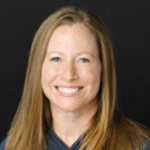
Volonoff/shutterstock.com
As Erin L. Arnold, MD, partner, Orthopaedics and Rheumatology of the North Shore, in Skokie, Ill, observed patients’ health insurance deductibles and copays getting dramatically higher and higher, she decided that it was time to explore a program that would require patients to keep a credit card on file.
“As a private practice and small business, cash flow is something we always paid close attention to,” she says. “This was especially the case at the beginning of the year, when a lot of patients had to pay down deductibles—which really impacted our revenue.”
Choosing EasyPay as a credit card merchant was an easy decision: The third-party program was already integrated into the practice’s electronic medical record (EMR) system—Aprima.
“When a staff member swipes a credit card, it automatically processes the payment through EasyPay,” explains Amy Rogers, MBA, CMPE, office manager for Orthopaedics & Rheumatology of the North Shore. “They don’t have to go to a different website, [because] the programs interface automatically. And there’s no additional charge to use EasyPay.”
Getting Staff & Patients on Board
For Dr. Arnold, the biggest challenge with implementing the EasyPay system was not training staff to use it. In fact, no training was required. Rather, getting staff to understand why the practice adopted the new system was the most difficult task.
“In order for a change to be successful, you must ensure that all staff are on the same page,” Dr. Arnold says. “Because staff would be responsible for asking patients to put a credit card on file, I explained that I was the person who was requiring it and why I was doing it. I told staff that I was here to support them if they encountered any resistance from patients.”
In fall 2015, the practice started posting notices at the front desk and checkout counter stating that it would require every patient to have a credit card on file beginning Jan. 1.

Dr. Erin Arnold
Then, at the start of 2016, staff asked existing patients for their credit card information in person when checking out and asked new patients for this information when scheduling an appointment. Dr. Arnold encouraged staff to tell patients that the physicians had implemented the new requirement. New patients were also told that if they didn’t cancel an appointment within a timely fashion, that they would be charged for that visit on their credit card. If a new patient wasn’t comfortable supplying a credit card, then they couldn’t schedule an appointment.
Ms. Rogers says the hardest part was getting staff to become comfortable with asking for a credit card, because they feared resistance. “Once they became confident, it became natural for them,” she says.
“If a patient spoke harshly to staff in response to the request or refused to provide a credit card, staff initially came to get me or Amy, and we would come out to the front office and explain to them why we needed a credit card,” Dr. Arnold explains. “In front of staff, so they could see how I interacted with patients, I made it clear to patients that we are here to take care of them. I went on to say, however, that I was sure that they have noticed changes in their health insurance as we have—such as higher deductibles—and that I am not a bank that offers loans or an insurance company. We need to be paid in a timely fashion.”
If a patient resisted, Dr. Arnold told them that she would be happy to help them find a new physician.
“Most of the patients who became upset were patients who traditionally didn’t pay their balances,” Ms. Rogers says.
The strategy worked well. Dr. Arnold and her partner have had very few patients leave the practice since the program was implemented.
Now, if a patient gets upset at check-in, staff tell them to discuss it with the provider. “Nine times out of 10, they won’t mention it,” Ms. Rogers says.
‘As more insurance companies increase financial burdens on patients, that burden will continue to be transferred to physicians.’ —Dr. Arnold
Nuts & Bolts
The practice accepts both credit and debit cards, as long as they bear a credit card emblem and have a valid credit card number. During the initial credit card setup, EasyPay automatically prints an authorization form for the patient to sign that the practice keeps on file.
If a credit card is cancelled or expires, staff mark the patient’s account so when they arrive for a visit, a pop-up states, “credit card declined,” and they can request a new one. “If it’s an ongoing issue, we will call the patient and ask them for a new one,” Ms. Rogers says. “In most cases, … patients are pretty good about it.”
Another benefit of the credit card program is that it offers a recurring payment system for large balances. Within the EMR system, staff can set it up so a patient can automatically pay a certain amount every month. All balances must be paid in full within three months.
Staff also review the calendar daily to see if any patients scheduled for a visit that day owe anything, so they can charge a balance and give the patient the receipt when they are there.
After a credit card is charged, patients are mailed a receipt. “It was important early on to have that communication link with patients so they became comfortable with the program,” Ms. Rogers says. “But our goal is to stop doing this for balances under $100 after a year so we don’t have that as an expense.”
Some patients also expressed concern about the system’s security. “We explained that we don’t keep their card’s information in our system; it’s only retained in the merchant’s system,” Ms. Rogers says. “We can only view their card’s last four digits and expiration date.”
The staff also tell patients that EasyPay is a secure and government-compliant database and that the practice underwent an approval process to employ the system. EasyPay provided the practice with a security handout that staff can give to patients to help ease any concerns.
‘In order for a change to be successful, you must ensure that all staff are on the same page.’ —Dr. Arnold
All fees related to an office visit are billed using the EasyPay system, including such services as infusion, physical therapy, X-rays and ultrasound.
As an alternative to having a card on file, Medicare patients can keep a $250 retainer, and commercial patients are required to have a $500 retainer. “We will only swipe up to $500 at one time,” Ms. Rogers says. “But if someone is leaving the practice, then we bill for the entire balance.”
Success Abounds
Dr. Arnold is pleased to report that 75% of the time there are no patient balances, which shows the program’s success. What’s more, the practice no longer has to pay an outside billing company or an agency to perform collections. “There is nothing more aggravating than sending multiple bills to a patient,” Dr. Arnold says. “EasyPay has allowed us to eliminate most of that cost—which ate away at our profit margin.”
Ms. Rogers says the program has been even more successful than she expected. “Initially I was nervous about how patients would react, but having the physicians’ support was key,” she says. “The Medicare patients love it because they no longer receive a bill to pay. Our patient accounts receivable has decreased by 25%.”
Just ‘Do It’
Most consumers are accustomed to paying for gas or groceries when they obtain those products. “But for some reason in our culture, they don’t have that same mindset when leaving a physician’s office,” Dr. Arnold says, “perhaps it’s because they already pay a monthly insurance premium.” It could also be because, a while back, physicians’ offices would allow patients to pay off a bill over many months. When 30–40% of patients have a deductible that’s $3,500 or higher, though, offices don’t have the means to carry those high balances. “We believe the healthcare community has to create the expectation of payment at time of service; we cannot afford to fund it any longer,” says Ms. Rogers.
Ms. Rogers has had some patients say that her practice is the only one that has employed such a payment system. “We respond with, ‘Well, that may be the case for now, but we are happy to be leaders in change. Soon, all practices will be doing this,’” she says.
Adds Dr. Arnold, “It’s a harsh reality for some patients.”
When asked if she recommends a credit card system to other practices, Dr. Arnold says, “Do it. It’s the only way to remain viable. It will give you some sense of control over cash flow. As more insurance companies increase financial burdens on patients, that burden will continue to be transferred to physicians.”
Karen Appold is a medical writer in Pennsylvania.


